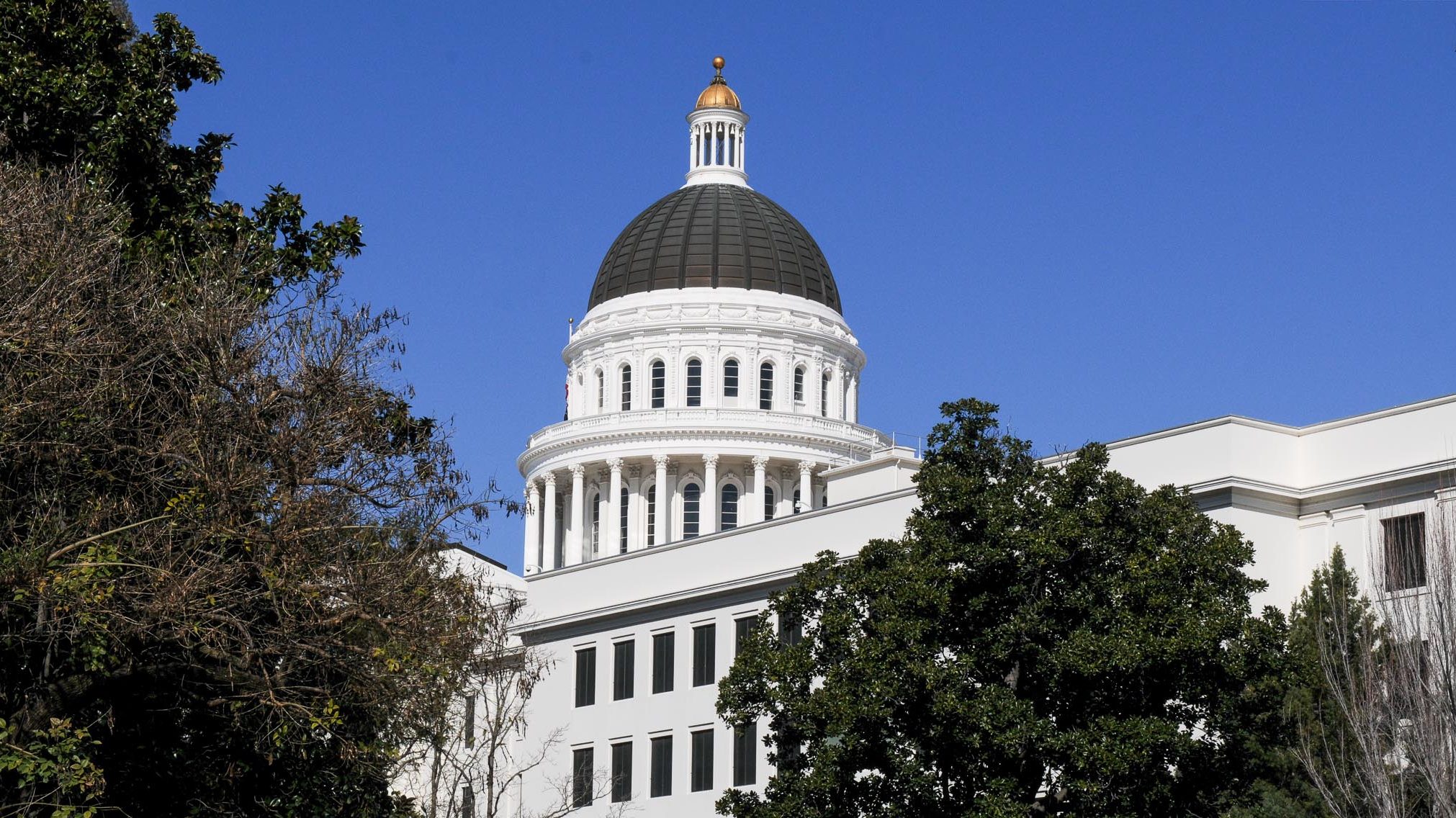
Pension Costs Are Not the Reason California’s Schools Fail the Disadvantaged
It’s not the money, it’s the management
By Edward Ring, October 21, 2020 3:38 pm
A recent guest editorial published by Bakersfield.com entitled “California’s defunding of public education” makes the case that a “pension contribution maneuver” has left school districts up and down the state with shrinking budgets.
The author, Shaohua Yang, gets many of his facts right. For example, he writes that “California 2019 per-capita income tax ranks the fifth highest in the U.S., and we also have high property, sales and business taxes. The lack of public school spending is not due to short revenue.” Yang is also right to observe that pension costs cannibalize funding for public services. But he’s only telling half the story.
The pension “maneuver” Yang refers to is the Public Employees’ Pension Reform Act of 2013, known as “PEPRA,” and pushed through the state legislature by Democratic Governor Brown. PEPRA was a last ditch attempt to rescue California’s public employee pension systems from insolvency. It was a compromise, balancing necessary increases to employer contributions with modest reductions in pension benefits, reductions that only affected new hires.
The result of PEPRA was a plan that, if CalSTRS investments can earn on average 7 percent per year, will finally achieve full funding by 2046, over 30 years later. Meanwhile, CalSTRS is on thin ice. Its still most recent available actuarial valuation, scandalously out-of-date, shows that as of 6/30/2018 the “amount of assets on hand to pay for obligations” stood at 64 percent. But did PEPRA reduce pension benefits or increase the member contribution rates? Not much.
Before PEPRA, teachers contributed 8 percent of payroll to their pension. Today, they contribute up to 10.25 percent. This must be compared to Social Security, to which employees have to contribute 6.2 percent of their earnings, and self-employed people have to contribute 12.4 percent of their earnings. Here’s how that plays out:
In return for 6.2 percent of lifetime earnings (or 12.4 percent, if you’re self-employed), the maximum Social Security benefit a private sector worker can expect, starting at age 62, and presumably after at least 30 years in the workforce, is $27,888 per year.
In return for 10.25 percent of lifetime earnings, after a 30 year career, here is what the average CalSTRS benefit is for retirees from the three “defunded” school districts that Yang mentions in his column:
Oakland Unified – $68,200 per year.
Bakersfield City School District – $70,778 per year.
Cupertino Unified – $82,749 per year.
It doesn’t take an actuary to see that something is wrong with this picture. If Yang, or anyone else who thinks public education is being defunded in California, is serious about getting more money to the school districts, they can call for pension reform that gives teachers the same deal as the taxpayers who support them: Social Security. That would save billions per year which could go right back into those “defunded” schools.
Or, to be completely fair, if these teachers, their unions, and the pension fund actuaries whose gospel-like prognostications have been so accurate so far, really think they can invest and earn 7 percent per year – 4.5 percent after adjusting for inflation – they can roll every dime of the $257 billion in CalSTRS assets into 401K plans for the teachers, so they can share in the risks and rewards of investing just like the taxpayers who support them. That too would immediately return billions per year to the public schools, money that taxpayers currently allocate towards paying down CalSTRS unfunded liability.
It’s not the money, though, it’s the management.
In his column, Yang goes on to highlight how “defunding” education has a disproportionate impact on the disadvantaged. This is only half true. Yang’s right that schools that serve low income communities do not perform as well as schools in high income communities. But he’s wrong to suggest more money is the solution. Notwithstanding the obvious fact that in general, higher income parents are more likely to impart higher academic expectations to their children, which inevitably means some disproportionality will always occur between high income and low income schools, it is management, not money, that harms students the most.
This was demonstrated in the Vergara case, an education reform lawsuit launched in 2013 that attempted to reform California’s union negotiated work rules. In his mesmerizing closing arguments, plaintiff attorney Marcellus McRae proved – citing testimony from witnesses called up by the defense – that rules granting early tenure, prioritizing seniority over merit in layoffs, and the near impossibility of firing incompetent teachers leads to a disproportionate negative impact on low income communities. Vergara was dismissed on a technicality, and California’s disadvantaged students are the ongoing victims.
While fixing these management issues would yield important incremental improvements, the solution that would save California’s system of public education is school vouchers. Give parents of K-12 aged children a voucher they can redeem at any school they choose. Public, public charter, private, religious, secular, homeschool, virtual school or micro-school. If the student bodies of these schools can pass the standardized academic achievement tests, they can continue to accept vouchers. It can be that simple.
To truly appreciate how much money California’s union controlled system of public education has been wasting, refer to a California Policy Center analysis published earlier this year that calculated the true, gross amount of per student spending in California in the most recent fiscal year to be over $20,000 per pupil. Shaohua Yang, who is a “system architect in the semiconductor industry in San Jose,” is invited to review the data to verify this figure for himself.
Imagine what a charter school or micro-school could do with all that money. A twenty student class would have a $400,000 per year budget, easily enough to lease a classroom, purchase educational materials, and hire an amazing teacher. Perhaps the voucher could be for $15,000, still more than enough, and the rest could be returned to taxpayers.
What Yang, and every other conscientious Californian who cares about social injustice should be doing is recognizing that the teachers’ union is the primary reason public education is failing the disadvantaged. They have made it almost impossible for principals to hold teachers accountable and terminate the incompetent. They have fought the expansion of charter schools and convinced reformers that so much as a discussion of vouchers is politically impossible. But that’s not the worst of it.
In an amazing inversion of everything they supposedly stand for, the teachers’ union has embraced one of the most reckless capitalist gamblers on earth, the California State Teachers Retirement System, as a full partner. The teachers’ union demands retirement benefits for their members that are literally twice as good as the Social Security benefits available to the taxpayers they serve, blind to the fact that CalSTRS, along with all the rest of these public employee pension funds, are among the biggest players on Wall Street.
If pension costs are indeed crowding out funding for public education, as Yang alleges, then at the least call it what it is: a Wall Street bailout, designed to reward a privileged class, with children as the victims.
- Ringside: How Much Water Will $30 Billion Buy? - April 10, 2024
- Ringside: Sacramento’s War on Water and Energy - April 4, 2024
- Ringside: The Cost of Offshore Wind vs Carbon Sequestration - March 28, 2024





Hi FYI, teachers are not permitted by law to pay into social security, their pensions are all they have to take care of their needs after retirement. If this is taken away they can not receive social security payments.
The article is comparing CalSTRS pension benefits to Social Security in order to highlight the huge disparity between the two benefits. The hypothetical case whereby teachers would switch to becoming Social Security beneficiaries obviously would include a provision to apply those benefits as if the teachers had been contributing to Social Security throughout their careers. And that would be entirely feasible, since the amount they would have contributed could easily be funded by liquidating CalSTRS and putting their assets into the Social Security fund.
It is a monstrous hypocrisy that the teachers’ union agitates for teachers to receive a financially unsustainable pension benefit that relies on profit driven investment performance, instead of agreeing to share the benefit that everyone else pays into and receives, which is Social Security. If the teachers’ union wished to make a constructive and morally defensible case for retirement security, they would call for an end to CalSTRS and a transition for all their members into Social Security. Then they might work to defend and enhance Social Security benefits for everyone.
You are missing the point. The promised return on the teachers’ investment in their pension is much larger than the return which taxpayers get, due to taxpayers’ funding the excess. Why should teachers receive a so much larger return per dollar? Answer: CA taxpayers are slaves to public-sector unions, plain and simple. Some animals are better than others.
Dear Edward, you pointed out the contribution increase of teachers towards the pension, which is a smaller additional burden for schools. The quoted article was referring to the “employer contribution”, which increased almost 10% of the payroll and has a more significant impact on the school budget. If the additional teacher’s contribution as you pointed out is included, the defunding amount is even worse than my article showed.
Besides this, I agree that merely funding would not necessarily solve the issue.
However, not funding enough would harm education for sure.
Dear Edward, I am the author of the quoted article. I would not suggest reducing the pension for teachers. I do think that it should be bailed out or reformed without reducing usable school funding.
Dear Mr. Yang: Thank you for your comment. You write: “I would not suggest reducing the pension for teachers. I do think that it should be bailed out or reformed without reducing usable school funding.” I agree with you in principle, but “bailed out or reformed” represent two very different choices.
What I find ironic is that if public employees truly care about the public interest, and if their unions truly care about all workers, then “reform” of public sector pensions ought to take into account the many virtues of Social Security. For example:
1 – Adjustable, so when funding is inadequate, the retirement age can be raised or the benefit amount can be lowered.
2 – Progressive, so that people who make a lot of money get less, as a percentage of their lifetime earnings, than people who don’t make very much money.
3 – Impossible to spike, because the benefit is calibrated based on lifetime earnings instead of based on the last year, or last few years, of annual earnings.
In general it seems that government workers ought to get exactly the same taxpayer funded retirement benefit that private citizens get, which is Social Security. Moving in that direction, while protecting benefits accrued for work already performed, would be a giant step towards unifying our country. As it is, government employees are a protected class of workers with special benefits and privileges. It is not only unfair to private sector citizens, it is financially unsustainable.